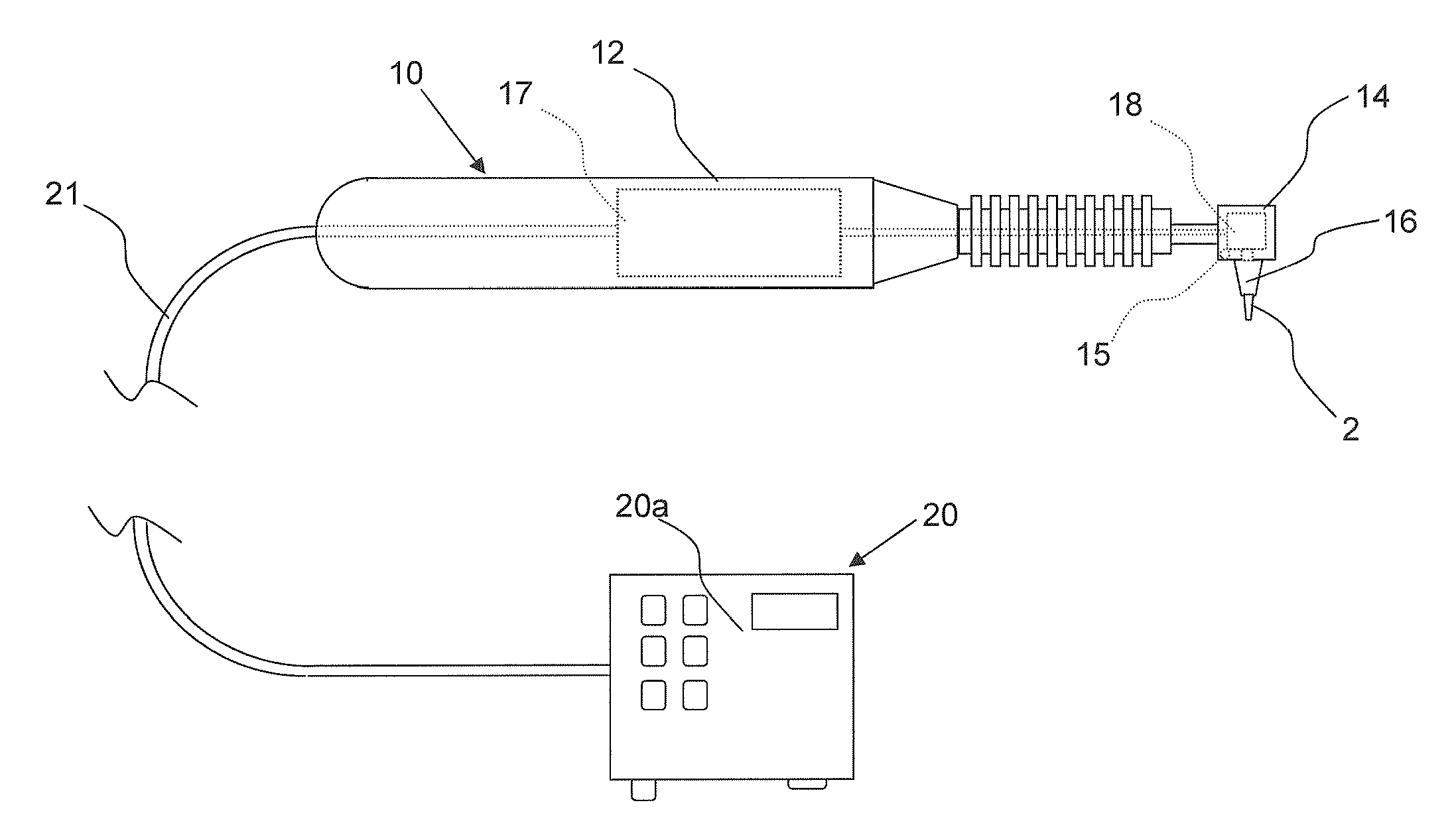Endodontic tool and method
a technology of endodontic tools and endodontis, which is applied in boring tools, medical science, dentistry, etc., can solve the problems of obviating the benefit of root canal procedures, threads defining helical grooves can lock or catch on interior canal surfaces, and the rotational force is not completely within the control of the dentist or endodontis
- Summary
- Abstract
- Description
- Claims
- Application Information
AI Technical Summary
Benefits of technology
Problems solved by technology
Method used
Image
Examples
Embodiment Construction
[0012]It has been discovered that the root canal procedure can be as effectively accomplished using a reciprocating endodontic hand tool such as that described in U.S. Pat. No. 6,293,795, but in which the torque applied to the debriding file does not exceed the elastic limit of the file. This makes the root canal procedure far safer, considerably reducing or potentially eliminating the possibilities of plastic distortion and fatigue, or breakage of the file during the canal debriding / cleaning / shaping process.
[0013]The invention thus provides a hand-held tool for rotating an endodontic instrument for preparing a root canal for filling, the tool comprising a chuck for holding the instrument, a head associated with motor means for rotating the chuck alternately in forward and reverse directions, and a torque sensor for measuring a rotational torque on the chuck, such that the instrument can cut the canal, remove debridement material and advance in the canal, whereby a torque limit on t...
PUM
 Login to View More
Login to View More Abstract
Description
Claims
Application Information
 Login to View More
Login to View More - R&D
- Intellectual Property
- Life Sciences
- Materials
- Tech Scout
- Unparalleled Data Quality
- Higher Quality Content
- 60% Fewer Hallucinations
Browse by: Latest US Patents, China's latest patents, Technical Efficacy Thesaurus, Application Domain, Technology Topic, Popular Technical Reports.
© 2025 PatSnap. All rights reserved.Legal|Privacy policy|Modern Slavery Act Transparency Statement|Sitemap|About US| Contact US: help@patsnap.com


